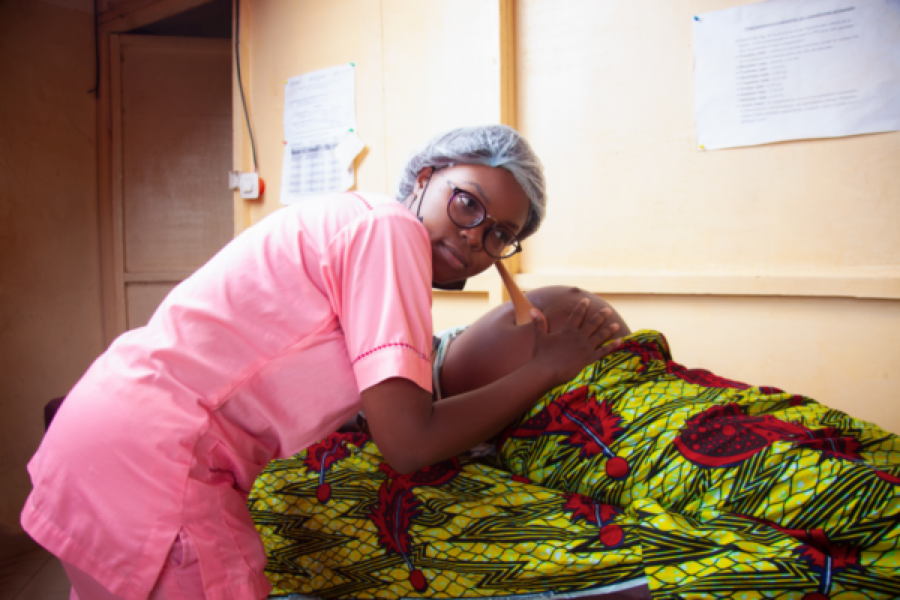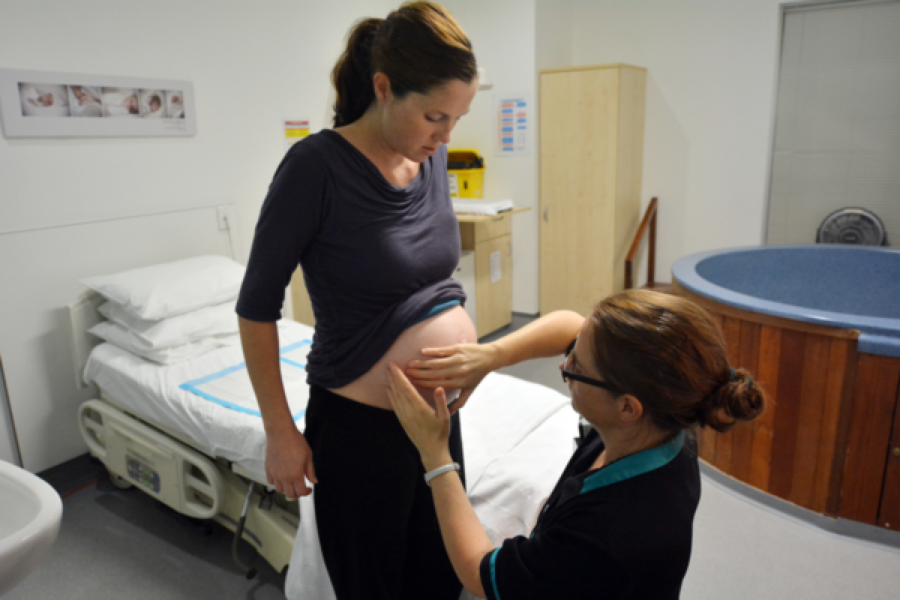
NEWS & RESEARCH
Dying to Give Birth: A Hidden Crisis in Healthcare
-
 EveryNurse Staff
EveryNurse Staff
- Last Updated: 10/01/2019

Nothing brings families together like the birth of a baby. In most American families, when a woman finds out that she is expecting a new little bundle of joy, the excitement extends far beyond the expectant mother and her partner. An impending birth is a family affair. The United States has been the World innovator of medical devices, pharmaceuticals and surgical techniques that have been credited with saving millions of lives. It is a mystery in regard to why there has been a steady increase in the number of pregnancy-related deaths since 1987, and why more is not being done to sound the alarm about this hidden crisis in the American healthcare system.
Defining the Issue
Most people are under the assumption that once a woman delivers a baby, everything in terms of the overall health of the mother goes back to normal. Women who are expecting along with the nurses, doctors and other medical practitioners who care for them, need to be aware that the Centers for Disease Control classifies pregnancy-related deaths as any death of a woman that occurs during pregnancy, or at any time within 12 months from the time they’ve given birth. According to the CDC, 60 percent of all pregnancy-related deaths are preventable. The CDC’s findings are alarming and should call the medical community into action to do whatever it takes to understand why women are losing their lives due to pregnancy-related deaths.
Taking a Look at the Statistics
The number of reported pregnancy-related deaths in the United States has steadily risen from 7.2 deaths per 100,000 live births in 1987 to 17.2 deaths per 100,000 live births in 2015. There is evidence to support the conclusion that there is a racial component involved in regard to pregnancy-related deaths. From 2011 to 2015, pregnancy-related mortality ratios according to the CDC were:
- 8 deaths per 100,000 live births for Black non-Hispanic women
- 5 deaths per 100,000 live birth for American Indian/ Alaskan Native non-Hispanic women
- 2 deaths per 100,000 live births for Asian/Pacific Islander non-Hispanic women
- 0 deaths per 100,000 live births for White non-Hispanic women
- 4 deaths per 100,000 live births for Hispanic women
According to research conducted at the Harvard T.H. Chan School of Public Health, the phenomenon of birth-related deaths in the United States is an outlier when compared to mortality rates among women who are pregnant or have delivered a baby within a year in other affluent countries. According to the CDC 700 to 900 American women die every year during pregnancy or after giving birth. In addition, another 500,000 women endure life-threatening complications each year. According to the World Health Organization African American women who live in the United States are three to four times more likely to lose their lives while giving birth, or after giving birth than their Caucasian counterparts. An African American woman’s chances of surviving childbearing can statistically be compared to the rates of survival in the countries of Uzbekistan and Mexico.
A Real Eye Opener
Investigative reporter Nina Martin wrote a series for ProPublica-NPR titled “Lost Mothers”. The series took an in-depth look at why birth-related deaths are so prevalent in America. While speaking at a symposium at the Harvard T.H. Chan School of Public Health in September 2018, Ms. Martin stated that there was one common thread in the many stories she compiled about women who lost their lives due to birth-related issues. She told the audience that in every case she investigated, the babies became the primary focus of the medical attention and the mothers were not monitored as closely. She indicated that the concerns of the new mothers in the cases she investigated were either ignored or dismissed and in the majority of those cases, the women were not educated or given any discharge instructions in regard to the symptoms they should monitor and or seek immediate medical attention for.
Deaconess Medical Center’s obstetrician-gynecologist Neel Shah spoke of Martin’s provocative and eye-opening series. Dr. Shah gave some insight as to why the mortality rate among African American women is so much higher than other demographic groups and is continuing to rise. “The common thread is that when black women expressed concerns about their symptoms, clinicians were more delayed and seemed to believe them less.” Dr. Shah said. “It’s forced me to think more deeply about my own approach. There is a very fine line between clinical intuition and unconscious bias.”,Dr. Shah concluded.
Uncomfortable Truths
The medical community needs to face some uncomfortable truths in regard to the role implicit bias actually plays in the type of care patients receive. Doctors and nurses can start by holding themselves and their counterparts accountable for their actions and their behaviors when they see one of them not providing the same level of care, or displaying an equal level of concern for all of their patients. Often times, people in the medical community look for every excuse they can not address the issues of stereotypes, perceptions, personal and professional bias, and race. Medical professionals must learn to accept the truth that implicit bias is prevalent in the medical community, and fully engage in activities to address it.
In terms of birth-related deaths, it is a fact that women of all races and ethnic groups are dying at alarming rates. It is also a fact that women, no matter which end of the economic spectrum they’re on, face the possibility of not surviving their pregnancies. There are no better examples of high profile American women who nearly lost their lives after having their concerns dismissed after giving birth, than actress and singer Beyonce and tennis superstar Serena Williams. Both women have amassed enormous fortunes, and both experienced life-threatening complications following the births of their babies.
Policy and Bias
Nurses come to work every day with one goal in mind, and that is to do everything they can to provide the best care for the patients they encounter. It is important that every practicing nurse is cognizant of the fact that everyone has their individual set of perceptions and everyone can be biased. Most people never self evaluate to understand why they choose to engage in specific activities, nor are they willing to recognize bias manifests from a number of variables like experiences, personal preferences, and external influences like social media and the news.
There have been a number of bills introduced in states many experts conclude have influenced the views the general public has regarding women in general. Movements like “Me Too” have done a great deal in recent years to expose many of the issues that affect the health and mental health of all women, however, when it comes to implicit bias, there is still a lot of work that needs to be done in the healthcare community and society at large. It should be noted that although many of the recent laws impacting women and their reproductive health have been pushed forward by men, it should be acknowledged that there are a number of women in legislative power that have had, and continue to create and support obstacles that diminish the rights of women and their ability to acquire appropriate reproductive care, like the dismantling of the Affordable Care Act, and attacks on Planned Parenthood.
Georgia State Sen. Rene Unterman gained national attention when she used her position as Health and Human Services Chair to block the Pursuing Justice for Rape Victims Bill. The bill would have provided funding for the thousands of rape kits sitting on the shelves of police and sheriff’s departments in her state to be tested. Unterman refused to bring the bill up for a vote in her committee which meant that it never made it to the floor in the main legislative body. The bill eventually made it out of Unterman’s committee due to mounting pressure from both Democratic and Republican lawmakers and community activist groups. The piece of legislation was passed in the Georgia Senate and unanimously passed in the Georgia House of Representatives. Unterman lost her appointment as chair of the Health and Human Services Committee on Jan. 15, 2019, however, she announced her plans to take her brand of politics to Washington D.C. as she is running for the Congressional House Seat in Georgia District 7.
The rhetoric used in reference to women and their bodies has had a negative impact, and further helps to project negative perceptions about women’s bodies and how they should be perceived. Virginia State Senator Steve Martin, Oklahoma State Representative Justin Humphrey, along with Florida House Speaker Jose Olivia all referred to pregnant women as host. Oklahoma’s Justin Humphrey took his statement about his thoughts about women to a new level when the said, “I understand that they feel like that is their body. I feel like it’s a separate-what I call them is, is you’re a host.”
The Delivery of Appropriate and Compassionate Care
It is easy to get drawn into the national debate of the day and partisan politics, however, it is important for nurses to maintain an objective approach when caring for their patients. Patients depend on nurses to use their skills to administer appropriate and compassionate care, without judgment and without bias, even if it is implicit.
The questions every nurse needs to ask themselves in regard to new mothers are simple:
- Have I given every mother under my charge the attention they need?
- Did I acknowledge and address the concerns of every mother under my care?
- Why did I choose to act or not act when a patient asked for my help?
Taking a little time every day to self evaluate and to reflect on what worked well and what didn’t work well during a shift makes each nurse a better agent of care. Self-reflection also improves the system of care in hospitals and other healthcare facilities as a whole. In addition, taking the time to understand what implicit bias is, and the impact it has on how health interventions are administered should not be viewed as an inconvenience, but an opportunity for every nurse to expand their base of knowledge and grow in their profession.
Nurses can drive the changes that are necessary to protect women from pregnancy-related deaths. Nurses can join their hospital’s labor-management committee, and if there is no committee in place, they can start one. Most health organizations welcome the establishment of Employee Resource Groups. Nurses can work with the decision-makers in their facilities to establish one. Floor nurses can also work with their charge nurses or Nursing Directors to observe, study, and review current policies and procedures on labor and delivery floors. Nurses working together can end the tragedy of pregnancy-related deaths.























